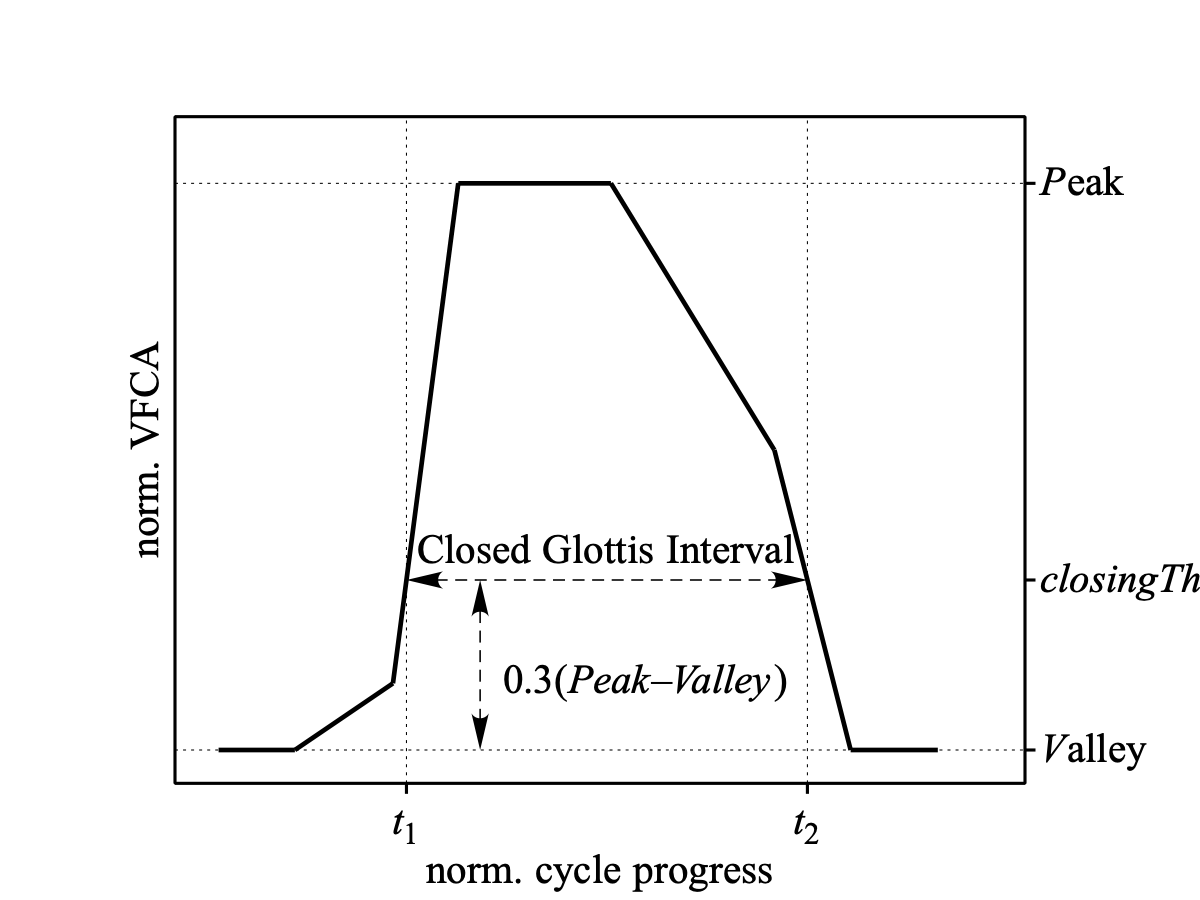
|
Calculates the intervals where the glottis is closed from the selected Electroglottogram.

The algorithm first tries to find peaks and valleys, guided by the settings for the pitch floor and ceiling. From the level crossings before and after a peak the times of glottal closing and opening are determined.
Getting exact timing of the glottal closure instants (GCI) and glottal opening instants (GOI) from the Electroglottogram is problematic because as Herbst (2019) notes: the vocal folds do not vibrate as a uniform mass. Rather, their vibration is characterized by phase differences along both the inferior–superior and anterior–posterior dimensions. These phase differences cause time-delayed contacting and de-contacting of the vocal folds along the respective axes. There is thus no specific instant of glottal closing and opening, but rather an interval during which the closing and opening, respectively, occur.
© djmw 20221115